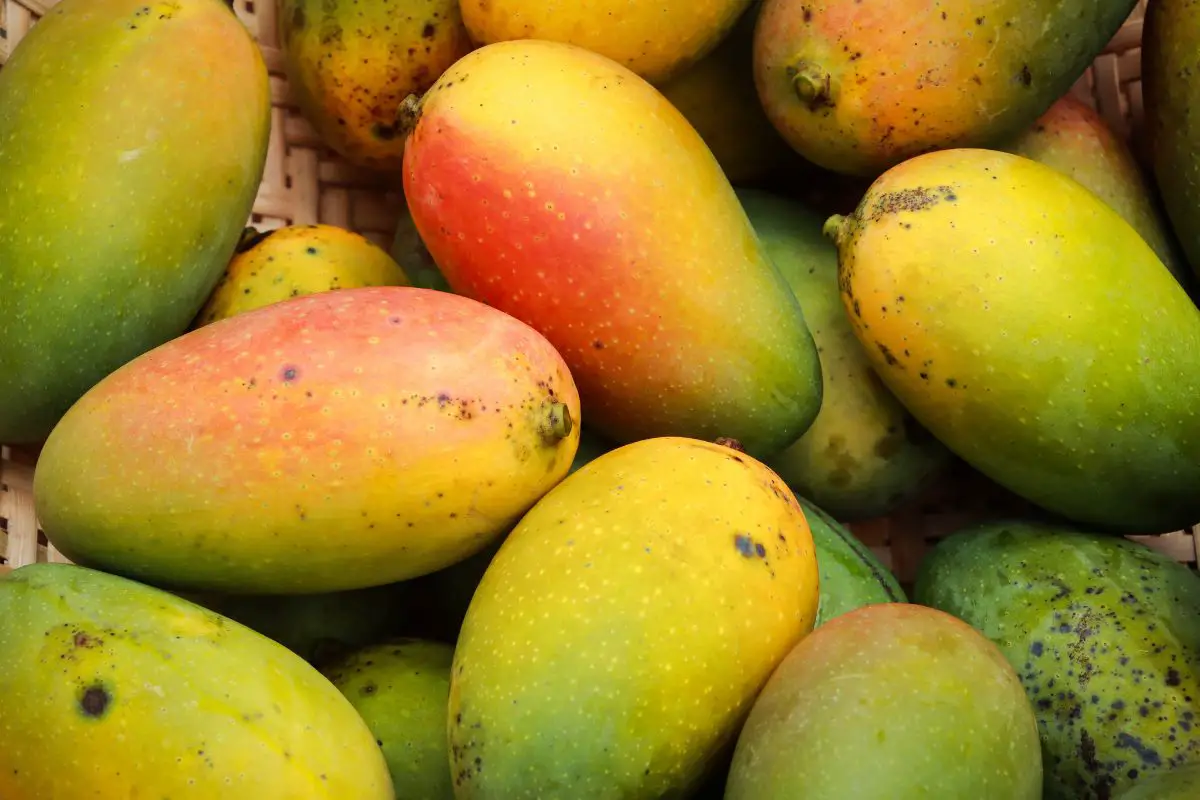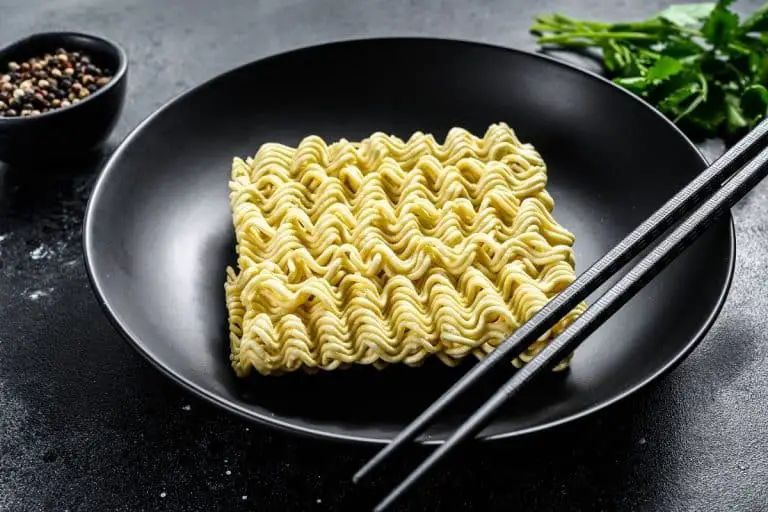How To Tell If A Mango Is Bad
How To Tell If A Mango Is Bad? – that is the question! If you’ve got a mango or a bunch of mangoes sitting on your counter looking kind of iffy and are wondering if they are rotten or if you can still eat them, you’re in the right place! Get ready to learn how to identify a bad mango on the spot!
It’s juicy, it’s sweet, and most importantly, it is considered a sacred fruit by the inhabitants of one of the countries that first produced it, India. If you haven’t guessed by now, we’re talking about mangoes… Again!
In our previous post, we covered ways you can tell if a mango is ripe, how long it takes to ripen, and even if you can eat it when it’s green or not. However, we didn’t have enough room to elaborate much on a very common question — how do I know if a mango is bad?
Good news: it’s not too hard to tell, especially if you know the basics. So head to your kitchen, grab those funny-looking mangoes from your fruit bowl, and let’s start inspecting them! PS. If they squish in your hand, we’ll save you some time – they’re definitely bad, rotten, and NOT good to eat!
Signs of a Bad Mango
There are many ways you can tell if your mango is doing better than ever or, on the contrary, is on its way out. Some signs of rotting may seem obvious, but believe us, they can go unnoticed if you’re not aware of them:
- Wrinkled skin. The first thing to check if you want to learn how to know if a mango is bad is its skin. Some mango varieties develop small wrinkles as they ripen, but if you see one that is completely covered with deep wrinkles, chances are it’s bad.
- Black spots. A couple of small, shallow dark spots do not translate into spoilage. However, if the dark spots multiply and penetrate the skin into the flesh or worse, a liquid emanates from them, that mango should be tossed ASAP.
- Super soft texture. Mangoes should have a texture that is neither too soft nor too hard, and this can be checked by gently touching it. If you apply light pressure to the surface and your fingers pierce the skin, leave it where you found it.
- Mold. Well, this one is pretty self-explanatory. Mold is always a no-no!
- Boozy smell. When smelling a mango near the stem area — where it will give you the most intense scent — it should smell sweet and fruity, not sour, off-putting, or boozy. You know that distinctive odor of something starting to ferment? Well, if you detect it in your mango, that’s what’s going on. (And for those of you that just thought, “Can it get me drunk?” we don’t recommend finding out!)
- Mushy and dark flesh. The flesh of a good ready-to-eat mango is far from mushy and odd-looking. It’s soft, yellowish-orange, and can be pulpy, but never mushy or dark.

What Color Is a Bad Mango?
Color can also be an indicator that a mango is not as good as it should be; however, you should not use it as the only decay indicator. There are too many mango varieties out there, and they all have different colors.
Generally speaking, a bad mango will have extremely dull colors. Its yellow will turn dark mustard, its green will start to turn gray, and its red will become deep brown. In addition, its flesh will no longer have that appealing rich color, rather, it will turn brown as well indicating it’s bad and ready for the compost.
Can You Eat Wrinkled Mangoes
Ripe mangoes can develop wrinkles as they ripen, so you can eat them as long as the wrinkles are superficial. However, if it has lots of wrinkles, it is a sign that the mango is starting to go bad. And if the wrinkles are also deep, that means it’s most likely already started rotting on the inside.
Truth is, the best thing you can do to find out if you can eat that funny-looking wrinkled mango is to cut it open and see if the inside is intact. Or better yet, look for the signs we mentioned above!
What Does a Bad Mango Taste Like?
How do you know if a mango is bad? Simple, trust your taste buds. A bad mango tastes bitter, pungent, and boozy — just awful.
When this fruit starts to spoil, it’s because of its high sugar content. Enzymes do their job and begin to ferment it naturally, resulting in that unpleasant boozy — or vinegary — taste. Yuck!
Fun-fact: Did you know that there is an organization devoted exclusively to mangoes? That’s right! The National Mango Board is dedicated to researching and promoting this delicious tropical fruit, supporting those who grow, distribute and consume them. Their mission is to raise awareness about mangoes so that they will be known for their benefits and origins and, eventually, be enjoyed by more people in the U.S. Isn’t it magnificent?
How To Tell If Cut Mango Slices Are Bad
Like any fruit, mangoes tend to last longer if kept in their whole form. Once they are cut open, the decay clock starts ticking faster, so it is important to watch for any unfavorable changes.
Mango slices that are in the process of rotting tend to give off a strange odor, like a cross between vinegar and alcohol. You may also see dark spots or even mold if the slices were cut more than 2 weeks ago and have not been refrigerated.
Plus, if at first glance you don’t notice anything unusual, but once you take a bite, it tastes pungent and unpleasant, that’s the biggest sign that they are bad, and you need to discard those mango slices.

Overripe vs. a Bad Mango
An overripe mango is not the same as a bad mango, but the line between them is very, very thin.
When a mango is overripe, it will feel softer than usual and may have wrinkles all over the surface. It also may not smell as good as it did when it was at its peak flavor-fullness, i.e., it may smell slightly bitter if you give it a good sniff. You won’t feel it overly soft, you won’t see deep dark spots, and it definitely won’t smell rotten.
Another big difference between the two is that the flesh of an overripe mango can get a shade darker than its original color, but never dark brown. But we’ll talk about brown flesh later on.
How to Tell If a Mango Is Good
Learning how to tell if a mango is good is just as important as knowing how to tell if a mango is bad. Spoiler alert: it’s just as easy too! Use this as a quick guide:
- Texture: If when you touch it, you feel that it gives slightly, you are looking at a ripe, ready-to-eat mango. The best ones are those that are soft yet kind of firm (if that makes sense), not entirely soft or completely firm.
- Smell: A good mango can be recognized almost solely by its smell, so give it a sniff near the stem end. If you catch a strong, sweet, fruity, mouth-watering scent, it means it’s perfect to enjoy.
- Appearance: Every mango variety is different, but generally speaking, a good one should have smooth, shiny, wrinkle-free skin. As for their colors, they should be vibrant — no matter if they are red, orange, green, or yellow.
- Taste: Good mangoes taste as good as they smell. Their flesh should be soft, juicy, pulpy, and sometimes stringy. Full of floral, sweet, and even citrus flavors.
- Weight: You’ll know you have a good mango when you pick it up, and it feels heavier than it looks. If it feels light, it’s probably unripe.

The Shelf-life of Mangoes
Long story short, the shelf life of mangoes depends on 2 major factors — their ripening stage and storage condition.
It goes without saying that mangoes are not like canned ham. After all, they are fruits that are vulnerable to the environment and everything that comes with it. Things like bacteria, excess heat, humidity, and direct sunlight can affect their shelf life — which usually doesn’t go beyond 3 days once fully ripe.
How Long Do Mangoes Last?
If we are talking about a green mango that has not yet ripened, it will take 6 to 8 days to ripen. After it is completely ripe, it can last for 2 to 3 days if left unrefrigerated.
Ideally, mangoes should be kept at room temperature in a cool, dry environment, even if it means that they won’t last for long. However, if you want them to have a longer shelf life (5 to 7 days), you can put them in an airtight container and store them in the fridge. Mind you, as long as they are fully ripe.
You can also dice mangoes, place them inside a freezer bag and store them in the freezer — they will stay frozen (and edible) for months! This is the best option if you want to have a stock of small pieces of mango to make juices or other recipes.
FAQs
Is Mango Supposed to Be Sour?
While it’s true that mangoes can have a sour taste, they should not taste that way if fully ripe. Unripe mangoes are the ones that tend to taste sour because the starch inside them has not yet been transformed into sugar. However, there is another instance in which a mango may taste sour, and that is when it is starting to go bad.
Usually, bad mangoes taste mostly bitter and vinegary, but some varieties can taste sour early in the decay process.
Why Do My Mangoes Have Black Spots On Them?
Black spots on mangoes can appear for many reasons, one of them being poor handling during the picking or transportation process. Some mangoes naturally have tiny black spots all over their skin, but small cuts and bumps can cause their skin to darken more in certain areas. However, it’s all good if the black spots don’t penetrate the skin.
Sometimes, large black spots can be caused by bacterial black spot disease (a.k.a BBS), but this is not very common. They can also show up if the mango is starting to go bad, but if that is the case, the spots will not be the only sign.
While there are freckled mangoes (as we like to call them) that may be damaged on the inside, most are good to eat — as long as the dark spots are not large, too ugly looking, or exaggeratedly deep.
Is a Mango Still Good if It’s Brown?
Ok so, we’ve figured out how to tell if a mango is bad, but… Can you still eat a mango that looks a little brown? Actually, yes, but only if its skin is intact and not all the way dark. You can expect the colors on the outside to fade a bit and some to develop brownish tints over time, but if they turn completely dark brown, it’s not a good sign.
The same goes for the inside of the mango. It’s still edible if the flesh is light brown, but it won’t taste as good. However, if it has dark brown flesh, that means it has gone bad.








